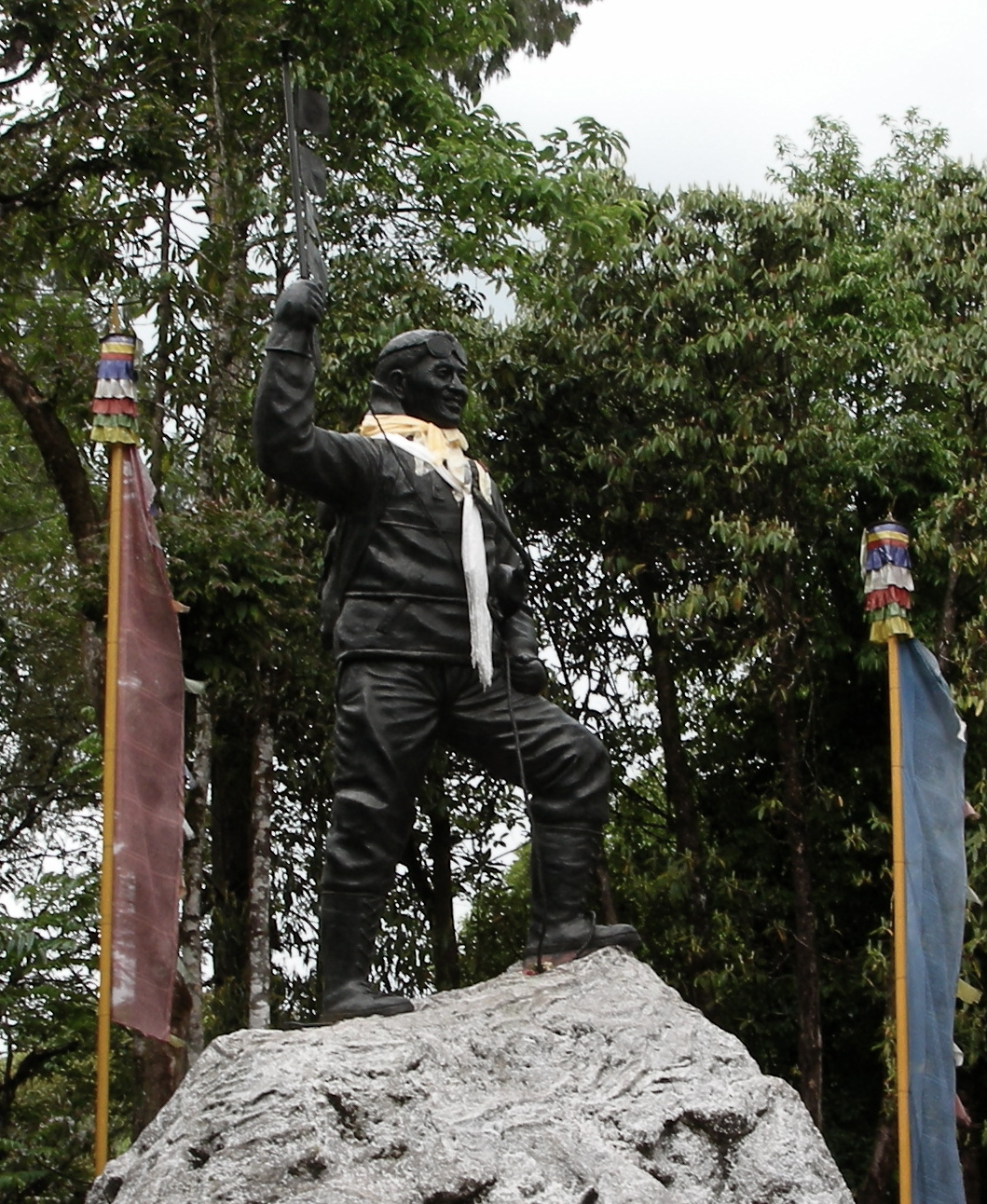|
Miyolangsangma
Miyolangsangma is the Tibetan Buddhist goddess who lives at the top of Chomolungma ( Mount Everest). She is one of the five long-life sisters and her virtue is Inexhaustible Giving. She started out as a malevolent demoness and was converted by a great Buddhist. Now she is the Goddess of inexhaustible giving and of Everest and the Khumbu area in general. She rides a golden tigress, and hands out the jewels of wishes to those deserving. Many climbers of Chomolungma beseech her favor at the traditional stupa in which a Buddhist monk prays for them and they go through certain ceremonies. It is said that Tenzing Norgay followed her up Everest and that she allowed him to be the first to summit Everest.{{Cn, date=June 2023 References Dharmapalas ... [...More Info...] [...Related Items...] OR: [Wikipedia] [Google] [Baidu] |
Mount Everest
Mount Everest (; Tibetan: ''Chomolungma'' ; ) is Earth's highest mountain above sea level, located in the Mahalangur Himal sub-range of the Himalayas. The China–Nepal border runs across its summit point. Its elevation (snow height) of was most recently established in 2020 by the Chinese and Nepali authorities. Mount Everest attracts many climbers, including highly experienced mountaineers. There are two main climbing routes, one approaching the summit from the southeast in Nepal (known as the "standard route") and the other from the north in Tibet. While not posing substantial technical climbing challenges on the standard route, Everest presents dangers such as altitude sickness, weather, and wind, as well as hazards from avalanches and the Khumbu Icefall. , over 300 people have died on Everest, many of whose bodies remain on the mountain. The first recorded efforts to reach Everest's summit were made by British mountaineers. As Nepal did not allow foreigners ... [...More Info...] [...Related Items...] OR: [Wikipedia] [Google] [Baidu] |
Tibetan Buddhist
Tibetan Buddhism (also referred to as Indo-Tibetan Buddhism, Lamaism, Lamaistic Buddhism, Himalayan Buddhism, and Northern Buddhism) is the form of Buddhism practiced in Tibet and Bhutan, where it is the dominant religion. It is also in majority regions surrounding the Himalayas, Himalayan areas of India (such as Ladakh, Sikkim, Arunachal Pradesh, and a minority in Himachal Pradesh and Uttarakhand), in much of Central Asia, in the southern Siberian regions such as Tuva, and in Mongolia. Tibetan Buddhism evolved as a form of Mahayana, Mahāyāna Buddhism stemming from the latest stages of Indian Buddhism (which also included many Vajrayana, Vajrayāna elements). It thus preserves many Indian Buddhist Tantra, tantric practices of the Gupta Empire, post-Gupta Medieval India, early medieval period (500 to 1200 CE), along with numerous native Tibetan developments. In the pre-modern era, Tibetan Buddhism spread outside of Tibet primarily due to the influence of the Mongol Empire, M ... [...More Info...] [...Related Items...] OR: [Wikipedia] [Google] [Baidu] |
Tenzing Norgay
Tenzing Norgay (; ''tendzin norgyé''; perhaps 29 May 1914 – 9 May 1986), born Namgyal Wangdi, and also referred to as Sherpa Tenzing, was a Nepali-Indian Sherpa mountaineer. He was one of the first two people known to reach the summit of Mount Everest, which he accomplished with Edmund Hillary on 29 May 1953. ''Time'' named Norgay one of the 100 most influential people of the 20th century. Early life There are conflicting accounts of Tenzing's early life. In his autobiography, he wrote that he was a Sherpa born and raised in Tengboche, Khumbu, in northeastern Nepal.Tenzing & Ullman In a 1985 interview with All India Radio, he said his parents came from Tibet, but that he was born in Nepal. According to many later accounts, including a book co-written by his son Jamling Tenzin Norgay, he was born in Tibet, at Tse Chu in the Kama Valley, and grew up in Thame. He spent his early childhood in Kharta, near the north of the country. Norgay went to Nepal as a child to ... [...More Info...] [...Related Items...] OR: [Wikipedia] [Google] [Baidu] |

.jpeg/1200px-Tibetan_Buddhism_(214837929).jpeg)
